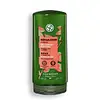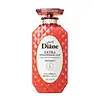What's inside
What's inside
 Key Ingredients
Key Ingredients

 Benefits
Benefits

 Concerns
Concerns

 Ingredients Side-by-side
Ingredients Side-by-side

Water
Skin ConditioningCetearyl Alcohol
EmollientEthylhexyl Palmitate
EmollientAsparagopsis Armata Extract
Skin ProtectingPropanediol
SolventGamma-Docosalactone
Skin ConditioningQuaternium-33
Glucose
HumectantButylene Glycol
HumectantGlucosyl Hesperidin
HumectantSorbitol
HumectantHydrolyzed Rice Protein
Skin ConditioningPrunus Domestica Seed Extract
EmollientGlycerylamidoethyl Methacrylate/Stearyl Methacrylate Copolymer
HumectantAscophyllum Nodosum Extract
Skin ConditioningSodium Hyaluronate
HumectantKeratin
Skin ConditioningPisum Sativum Sprout Extract
Skin ConditioningChamomilla Recutita Flower Extract
MaskingSpiraea Ulmaria Flower Extract
Skin ConditioningIsomalt
HumectantPolyquaternium-10
Polyquaternium-7
Hydrolyzed Collagen
EmollientHydrolyzed Silk
HumectantPCA Ethyl Cocoyl Arginate
MoisturisingAmodimethicone
Biotin
AntiseborrhoeicPouteria Sapota Seed Oil
EmollientSclerocarya Birrea Seed Oil
HumectantTheobroma Grandiflorum Seed Butter
Skin ConditioningMangifera Indica Seed Oil
EmollientPhytosteryl/Octyldodecyl Lauroyl Glutamate
Skin ConditioningUbiquinone
AntioxidantGlycine Soja Sterols
EmollientCeramide Ng
Skin ConditioningArgania Spinosa Kernel Oil
EmollientCeramide Ag
HumectantCeramide NP
Skin ConditioningCeramide AP
Skin ConditioningCeramide EOP
Skin ConditioningBis-Behenyl/Isostearyl/Phytosteryl Dimer Dilinoleyl Dimer Dilinoleate
EmollientChenopodium Quinoa Seed Oil
EmollientCarapa Guaianensis Seed Oil
Skin ConditioningAdansonia Digitata Seed Oil
EmollientDimethicone
EmollientSodium Lactate
Buffering1,2-Hexanediol
Skin ConditioningCholesterol
EmollientSalicylic Acid
MaskingO-Cymen-5-Ol
AntimicrobialGlyceryl Tri-Hydrogenated Rosinate
EmollientHydrogenated Lecithin
EmulsifyingPolyglyceryl-10 Laurate
Skin ConditioningSteartrimonium Chloride
PreservativeCetrimonium Chloride
AntimicrobialDicocodimonium Chloride
EmulsifyingQuaternium-18
Behentrimonium Chloride
PreservativeIsopropyl Alcohol
SolventGlycerin
HumectantPropylene Glycol
HumectantLactic Acid
BufferingTocopherol
AntioxidantDisodium EDTA
Phenoxyethanol
PreservativeParfum
MaskingCaramel
Cosmetic ColorantWater, Cetearyl Alcohol, Ethylhexyl Palmitate, Asparagopsis Armata Extract, Propanediol, Gamma-Docosalactone, Quaternium-33, Glucose, Butylene Glycol, Glucosyl Hesperidin, Sorbitol, Hydrolyzed Rice Protein, Prunus Domestica Seed Extract, Glycerylamidoethyl Methacrylate/Stearyl Methacrylate Copolymer, Ascophyllum Nodosum Extract, Sodium Hyaluronate, Keratin, Pisum Sativum Sprout Extract, Chamomilla Recutita Flower Extract, Spiraea Ulmaria Flower Extract, Isomalt, Polyquaternium-10, Polyquaternium-7, Hydrolyzed Collagen, Hydrolyzed Silk, PCA Ethyl Cocoyl Arginate, Amodimethicone, Biotin, Pouteria Sapota Seed Oil, Sclerocarya Birrea Seed Oil, Theobroma Grandiflorum Seed Butter, Mangifera Indica Seed Oil, Phytosteryl/Octyldodecyl Lauroyl Glutamate, Ubiquinone, Glycine Soja Sterols, Ceramide Ng, Argania Spinosa Kernel Oil, Ceramide Ag, Ceramide NP, Ceramide AP, Ceramide EOP, Bis-Behenyl/Isostearyl/Phytosteryl Dimer Dilinoleyl Dimer Dilinoleate, Chenopodium Quinoa Seed Oil, Carapa Guaianensis Seed Oil, Adansonia Digitata Seed Oil, Dimethicone, Sodium Lactate, 1,2-Hexanediol, Cholesterol, Salicylic Acid, O-Cymen-5-Ol, Glyceryl Tri-Hydrogenated Rosinate, Hydrogenated Lecithin, Polyglyceryl-10 Laurate, Steartrimonium Chloride, Cetrimonium Chloride, Dicocodimonium Chloride, Quaternium-18, Behentrimonium Chloride, Isopropyl Alcohol, Glycerin, Propylene Glycol, Lactic Acid, Tocopherol, Disodium EDTA, Phenoxyethanol, Parfum, Caramel
Alternatives
Ingredients Explained
These ingredients are found in both products.
Ingredients higher up in an ingredient list are typically present in a larger amount.
Glycerin is already naturally found in your skin. It helps moisturize and protect your skin.
A study from 2016 found glycerin to be more effective as a humectant than AHAs and hyaluronic acid.
As a humectant, it helps the skin stay hydrated by pulling moisture to your skin. The low molecular weight of glycerin allows it to pull moisture into the deeper layers of your skin.
Hydrated skin improves your skin barrier; Your skin barrier helps protect against irritants and bacteria.
Glycerin has also been found to have antimicrobial and antiviral properties. Due to these properties, glycerin is often used in wound and burn treatments.
In cosmetics, glycerin is usually derived from plants such as soybean or palm. However, it can also be sourced from animals, such as tallow or animal fat.
This ingredient is organic, colorless, odorless, and non-toxic.
Glycerin is the name for this ingredient in American English. British English uses Glycerol/Glycerine.
Learn more about GlycerinLactic Acid is another well-loved alpha hydroxy acid (AHA). It is gentler than glycolic acid but still highly effective.
Its main role is to exfoliate the surface of the skin by loosening the “glue” that holds dead skin cells together. Shedding those old cells leads to smoother, softer, and more even-toned skin.
Because lactic acid molecules are larger than glycolic acid, they don’t penetrate as deeply. This means they’re less likely to sting or irritate, making it a great choice for beginners or those with sensitive skin.
Like glycolic acid, it can:
Lactic acid also acts as a humectant (like hyaluronic acid). It can draw water into the skin to improve hydration and also plays a role in the skin's natural moisturizing factor (NMF) in the form of sodium lactate.
Studies show it can boost ceramide production to strengthen the skin barrier and even help balance the skin’s microbiome.
To get results, choose products with a pH between 3-4.
Lower strengths (5-12%) focus on surface exfoliation; higher strengths (12% and up) can reach deeper in the dermis (deeper, supportive layer) to improve skin texture and firmness over time.
Though it was originally derived from milk, most modern lactic acid used in skincare is vegan. It is made through non-dairy fermentation to create a bio-identical and stable form suitable for all formulations.
When lactic acid shows up near the end of an ingredient list, it usually means the brand added just a tiny amount to adjust the product’s pH.
Legend has it that Cleopatra used to bathe in sour milk to help reduce wrinkles.
Lactic acid is truly a gentle multitasker: it exfoliates, hydrates, strengthens, and brightens. It's a great ingredient for giving your skin a smooth, glowing, and healthy look without the harshness of stronger acids.
Read more about some other popular AHA's here:
Learn more about Lactic AcidParfum is a catch-all term for an ingredient or more that is used to give a scent to products.
Also called "fragrance", this ingredient can be a blend of hundreds of chemicals or plant oils. This means every product with "fragrance" or "parfum" in the ingredients list is a different mixture.
For instance, Habanolide is a proprietary trade name for a specific aroma chemical. When used as a fragrance ingredient in cosmetics, most aroma chemicals fall under the broad labeling category of “FRAGRANCE” or “PARFUM” according to EU and US regulations.
The term 'parfum' or 'fragrance' is not regulated in many countries. In many cases, it is up to the brand to define this term.
For instance, many brands choose to label themselves as "fragrance-free" because they are not using synthetic fragrances. However, their products may still contain ingredients such as essential oils that are considered a fragrance by INCI standards.
One example is Calendula flower extract. Calendula is an essential oil that still imparts a scent or 'fragrance'.
Depending on the blend, the ingredients in the mixture can cause allergies and sensitivities on the skin. Some ingredients that are known EU allergens include linalool and citronellol.
Parfum can also be used to mask or cover an unpleasant scent.
The bottom line is: not all fragrances/parfum/ingredients are created equally. If you are worried about fragrances, we recommend taking a closer look at an ingredient. And of course, we always recommend speaking with a professional.
Learn more about ParfumWater. It's the most common cosmetic ingredient of all. You'll usually see it at the top of ingredient lists, meaning that it makes up the largest part of the product.
So why is it so popular? Water most often acts as a solvent - this means that it helps dissolve other ingredients into the formulation.
You'll also recognize water as that liquid we all need to stay alive. If you see this, drink a glass of water. Stay hydrated!
Learn more about Water